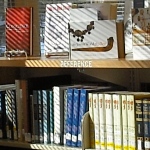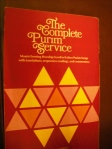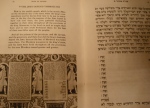 Fractals, which were all the rage several years ago, are geometric objects that are self-similar at all orders of magnitude. Sort of like broccoli, or trees, or coastlines. One way to get a fractal is to start with an equilateral triangle. Divide each edge in three and replace the middle third with a triangle to get a Jewish star. Repeat with the new shape. Continue doing this ad infinitum. At any given spot on the border, you have a line divided in thirds with a point sticking out of the middle. Some of the jagged triangles that make up the border of this shape are bigger than others, but they all look similar to each other.
Fractals, which were all the rage several years ago, are geometric objects that are self-similar at all orders of magnitude. Sort of like broccoli, or trees, or coastlines. One way to get a fractal is to start with an equilateral triangle. Divide each edge in three and replace the middle third with a triangle to get a Jewish star. Repeat with the new shape. Continue doing this ad infinitum. At any given spot on the border, you have a line divided in thirds with a point sticking out of the middle. Some of the jagged triangles that make up the border of this shape are bigger than others, but they all look similar to each other.
Anyway, my theory is that the Bible is about leaving one place for a new one. The Torah is, at one order of magnitude, about the Jewish people leaving Egypt to wander in the wilderness. On a smaller scale, the first book of the Torah and Bible, Genesis, or B’reishit in Hebrew, is, in large part, about Abraham and his family going from his homeland to wander in Egypt and settle in Israel. The first Torah portion of B’reishit, also called B’reishit, deals, on an even smaller scale, with two individuals, Adam and Eve, who are banished from Eden. On the other hand, the very first sentence, which starts with the word, B’reishit, on as big a scale as is possible, tells of the creation of the heavens and the earth. The mystics say that Creation cannot happen until God withdraws himself from a space to leave room for the world. The reasons and the terms may vary–Yitziat Mitzrayim, Lech Lecha, Vayeshalchehu, tzimtzum, but they are all about withdrawing from where one is.
In our own lives, we are also always on the move. Babies move from the Eden-like comfort of a world that exists only for them into one in which they are no longer the center of the universe. Children leave home to go to school, adults move from known relationships to new ones. The trick is to work to make the new place in your life into an Eden, to recognize that we will always move on, and that we need to allow space for others to make their own way in the world.*
* This insight on tzimtum is from Rabbi Michael Mellon, a Reform rabbi at YouthCon 2011, which I recently attended.





